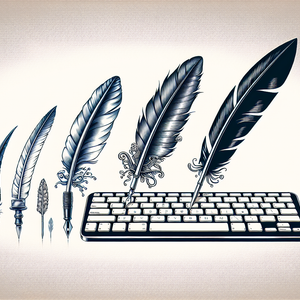The Evolution of Horror: Analyzing the Terrifier Franchise's Impact on Modern Slasher Films

Art the Clown, the franchise’s central figure, is not just another faceless killer; he is a character steeped in a grotesque blend of humor and horror. Unlike iconic slasher villains such as Jason Voorhees or Michael Myers, Art's silent, clownish demeanor adds an unsettling layer to his brutality. The contrast between his playful antics and the gruesome violence he inflicts creates a unique viewing experience that resonates with audiences seeking both thrill and shock.
Comparative Analysis with Classic Slasher Films
The Terrifier series can be likened to classic slasher films such as Halloween and A Nightmare on Elm Street, which laid the groundwork for the genre. In these earlier films, the killers often had a motive or backstory that provided a semblance of depth. Conversely, Art the Clown operates in a realm devoid of understandable motives, embodying pure chaos and unpredictability.
Changing Audience Expectations
The success of Terrifier highlights a significant shift in audience expectations. Today's viewers are more desensitized to horror due to the proliferation of content across streaming platforms and social media. As a result, filmmakers are compelled to innovate continually to capture and maintain viewer interest.
The Cultural Impact of the Franchise
The Terrifier franchise’s influence extends beyond its narrative and aesthetic choices; it has also sparked discussions about the role of women in horror. The depiction of strong female characters who confront Art the Clown challenges the typical trope of women as mere victims.
As we eagerly await Terrifier 3, it’s clear that the franchise has not only made a significant mark on the slasher genre but also redefined audience expectations in the realm of horror.
Horror Film Marketing Specialist
Independent film studios, major production companies, film festivals
Core Responsibilities
Develop and execute marketing campaigns that resonate with horror film audiences, utilizing social media and grassroots strategies.
Analyze audience engagement and feedback to tailor promotional content for upcoming releases.
Collaborate with filmmakers and distributors to create compelling promotional materials that highlight unique film aspects.
Required Skills
Strong understanding of horror genre trends and audience behavior.
Proficiency in digital marketing tools and analytics platforms.
Excellent communication skills, both written and verbal.
Special Effects Makeup Artist
Film production companies, theater companies, special effects studios
Core Responsibilities
Create realistic and imaginative makeup effects for horror films, focusing on practical effects that enhance the viewing experience.
Collaborate with directors and producers to achieve specific visual goals for characters, particularly in slasher films.
Maintain a clean and organized workspace while managing multiple projects under tight deadlines.
Required Skills
Expertise in makeup techniques, prosthetics, and special effects applications.
Strong portfolio demonstrating a range of horror-themed makeup effects.
Ability to work collaboratively in a fast-paced environment.
Screenwriter (Horror Genre)
Film studios, independent production companies, writing agencies
Core Responsibilities
Develop original screenplays or adapt existing stories into compelling horror narratives with a focus on character-driven plots and unique themes.
Research horror trends and audience preferences to create engaging and innovative scripts that challenge genre conventions.
Collaborate with directors and producers to refine scripts and adapt to production needs.
Required Skills
Proven experience in screenwriting, with a portfolio of completed scripts, preferably in the horror genre.
Strong storytelling abilities and a deep understanding of horror tropes and audience psychology.
Ability to accept and incorporate feedback constructively.
Film Critic/Reviewer (Horror Films)
Film magazines, online publications, blogs, and media outlets
Core Responsibilities
Write insightful reviews and analyses of horror films, focusing on their cultural impact, themes, and audience reception.
Attend film festivals and screenings to provide timely coverage and critique of new horror releases.
Engage with audiences through blogs, podcasts, or social media, fostering discussions about horror cinema.
Required Skills
Strong analytical and writing skills, with a focus on film critique.
Knowledge of horror film history and contemporary trends.
Ability to articulate opinions clearly and engage with diverse audiences.
Production Designer (Horror Films)
Film production studios, independent filmmakers, theater companies
Core Responsibilities
Create the visual concept of horror films, designing sets and environments that enhance the narrative and evoke fear.
Collaborate closely with directors and cinematographers to ensure a cohesive look and feel throughout the film.
Oversee the construction and decoration of sets, managing budgets and timelines effectively.
Required Skills
Strong background in art direction or production design, with an emphasis on horror aesthetics.
Ability to visualize and communicate design concepts through sketches and models.
Experience with materials and construction techniques used in set building.


